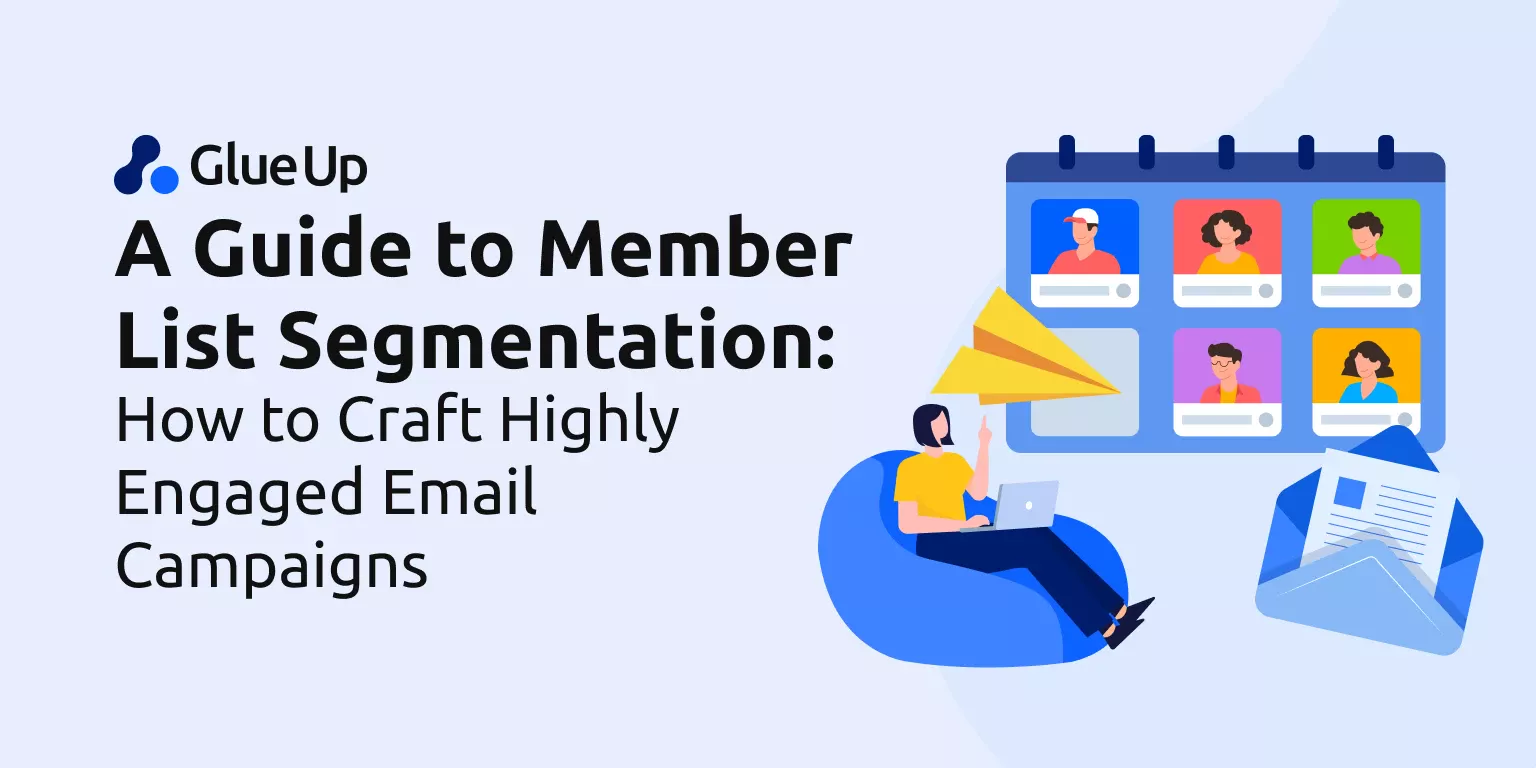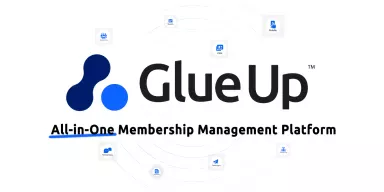
Every member is not the same, and neither do they have the same interests or needs. So, do you think targeting them with the same kind of content will get their attention? No, you need to make adjustments based on your members' interests and needs if you want to increase your membership base.
In this case, member segmentation is the best way to deal with it.
Member segmentation is a practical and effective strategy. It involves categorizing members based on their membership type, industry affiliation, interests, and needs. This blog is a comprehensive guide to member segmentation and how to craft highly engaging email campaigns.
If you're looking to optimize your outreach and engagement strategies, this is the solution you've been seeking. Read on to learn everything about member list segmentation.
Key Takeaways
- Member segmentation is essential for creating highly personalized and relevant content, and it significantly improves engagement and satisfaction.
- Segmentation leads to higher engagement rates and increased conversions. Segmented email campaigns have notably higher engagement rates compared to non-segmented campaigns.
- Failing to segment your member list can result in low engagement, missed opportunities, member frustration, limited insights
- Effective segmentation strategies include rewarding your most engaged members, combining segments for targeted campaigns, leveraging website behavior, and personalizing subject lines.
- Glue Up offers a comprehensive suite of tools for effective email segmentation and campaign management. These features ensure that your emails are personalized, engaging, and relevant to each member segment.
What is Member List Segmentation?

Member list segmentation is the process of dividing your association's email list into smaller groups based on shared characteristics. These characteristics can include:
- Membership type: This could be based on tier level (basic, premium, etc.), industry affiliation, or area of expertise.
- Interests: This includes what topics members engage with on your website or past emails to understand their preferences.
- Needs: Segment based on the stage in the member journey (new vs. renewing) or specific challenges they might face.
Segmenting your list allows you to send targeted emails that are more relevant and engaging for each group. It can also boost open rates and click-through rates and, ultimately, increase member satisfaction and loyalty.
Why Should I Segment My Members?
It's a debatable topic, but remember that statistics show that 80% of companies using market segmentation report increased sales. Driving more sales is one of any organization's primary goals, so if member segmentation can help achieve this, why not take advantage of it? But that's not all; member list segmentation offers other notable benefits as well.
Here are some compelling reasons why you should segment your member list for email marketing:
- Boost Engagement: Generic emails often get ignored. Segmentation allows you to craft relevant content that resonates with each member group's interests and needs, leading to higher open rates and click-through rates. In fact, segmented campaigns had 14.31% higher open rates and saw 101% more clicks than non-segmented campaigns.
- Increase Conversions: Targeted emails with clear calls to action are more likely to convert members into paying customers. Email marketers who segmented their audience before campaigning reported revenue increases of up to 760%.
- Strengthen Relationships: When members receive emails that are genuinely relevant to them, they feel valued and understood, and this helps build stronger relationships and builds loyalty within your association.
- Optimize Resource Allocation: Focusing your efforts on targeted campaigns can save time and resources compared to sending mass emails. Segmentation allows you to allocate resources efficiently and maximize the impact of your email marketing efforts.
- Gain Valuable Insights: Tracking the performance of segmented email campaigns provides valuable insights into member behavior and preferences. The data obtained can be used to further refine your segmentation strategies and ensure your content stays relevant and engaging.
- Overall, member list segmentation is a powerful tool for improving the effectiveness of your email marketing and strengthening relationships with your association's members.
Why You Need to Segment Your Member Communications

Have you ever received an email that felt irrelevant, like the promotion of a product that you are very unlikely to use? The same happens when you blast generic messages to your entire membership.
Members are individuals; they have unique interests, likes, needs, and pain points, and a one-size-fits-all approach to communication simply won't work.
Therefore, segmentation plays its part in catering to the different needs of each member. It's the magic key to unlocking highly engaging email campaigns. Here's why you need to segment your member communications:
- Attention Spans are Short: We're bombarded with information overload, and generic emails get lost in the noise. Segmentation lets you craft targeted messages that grab attention because they're relevant.
- Personalization is King: Segmentation allows you to personalize your communication. Your email is 50% more likely to be opened if the subject line includes the recipient’s name or any other kind of personalization. Plus, you can reference their specific interests or needs, creating a more positive and engaging experience.
- Smarter Use of Resources: Stop wasting time and money on mass emails. Segmentation allows you to focus your efforts on targeted campaigns, maximizing the impact of your communication efforts.
- Data is Your Friend: Tracking segmented campaign performance provides valuable insights into member behavior. The data gathered will help you refine your segmentation strategies and keep your content laser-focused on what resonates with your members.
What Happens if I Don’t Segment My Members?
Opting not to segment your member list can vary from one association to another, but it comes with distinct disadvantages. Here’s what you might face if you neglect member segmentation in your communication strategy:
- Low Engagement: Without tailored content to specific interests, you risk members ignoring your messages. Open rates and click-through rates will likely decrease, and your communication efforts will be in vain.
- Missed Opportunities: You might be sending renewal reminders to new members who have yet to experience the full value of your association or promoting industry-specific events to a general audience. These reminders can be ignored because they are generic, causing you to miss the renewal of many newly joined members. Segmentation allows you to target the right message to the right person at the right time, maximizing engagement and conversion opportunities.
- Frustration and Disconnect: A constant inflow of irrelevant emails can leave members feeling frustrated and undervalued. Such members might perceive your association as unbothered with their needs, potentially leading to member churn.
- Limited Insights: Without segmentation, you're essentially sending messages into a black hole. Tracking member behavior and preferences becomes difficult, hindering your ability to refine your communication strategies and ensure your content stays relevant and engaging.
- Falling Behind the Curve: Segmentation is becoming an essential tool for successful membership organizations. If your competitors are using targeted communication to build stronger relationships with their members, and you aren't, you risk falling behind them.
How to Get Started with Email List Segmentation
Getting started with email segmentation is simple; it's a step-by-step process. Here's a roadmap to get you started with email list segmentation for your association:
- Gather Member Data: Understanding your members is the foundation of segmentation. Utilize data you already collect during sign-up processes, surveys, website interactions, and past email engagement. This can include demographics, membership type, industry affiliation, areas of interest, and past event attendance.
- Define Your Segmentation Criteria: Determine the most relevant factors for grouping your members. Consider demographics, membership levels, interests tracked from website behavior, and their needs depending on their journey stage (new or. old members).
- Craft Targeted Content: Tailor your email content to resonate with each segment's specific interests and needs. Use relevant language, address pain points, and offer solutions that cater to their unique situations.
- Track and Analyze Results: Monitor the performance of your segmented email campaigns. Track metrics like open rates, click-through rates, and conversion rates for each segment. Analyze this data to see what resonates and refine your strategies for continuous improvement.
Ways to Segment Your Member Email Lists
There are many ways to segment your member list. Let's explore some of the methods:
Location
You can categorize members according to their location. Keeping members from the same location in one category will help you promote local events, workshops, seminars, or other networking events happening in their area. You can also offer regional insights or industry news relevant to their specific location.
Sign-up Date
Another way to divide your members into segments is by their sign-up date. Gather all the members who signed up on the same date or in the same month and put them in one list. With just one click, you can send all members targeted communications for renewals, highlight the value they've received, encourage them to continue their membership with special offers, or send reminders about upcoming events.
Email Activity
Email activity can also let you create your members' list, which you can segment based on click-through rates or past actions. For example, if someone clicks on an article about leadership development, you can put them in one list and send them additional resources on that topic.
Interests
Segmenting members based on interests by tracking their website activity or survey results is another way of creating segmentation; put them in one list if their interests match, and keep sending relevant content based on the sections visited.
Top Four Segments for Member Organizations

You can create as many segmented email member lists as you want, but for member organizations, four top segments matter and should be prioritized.
Let's explore what they are:
New Members
New members are crucial as they represent your organization's growth. Organizations should onboard new members from time to time and ensure that such members are engaged so they can gel well with your association and feel at home.
Here is how you can engage them through emails.
How to Engage
- Welcome them: Send a warm welcome email introducing your association and its benefits.
- Onboarding journey: Create a series of emails outlining key resources, upcoming events, and ways to get involved.
- Answer their questions: Address common concerns or questions new members might have.
- Connect them with others: Facilitate introductions to other new members or relevant committees.
Prospective Members
Prospective members are essential for your organization's future expansion. It’s important to consistently attract and engage these individuals so they feel compelled to join your association.
How to Engage
- Showcase the value: Highlight the benefits of membership and how it addresses their specific needs.
- Offer valuable content: Share free resources, webinars, or articles relevant to their interests.
- Invite them to events: Encourage attendance at open houses, workshops, or networking events to experience the association firsthand.
- Personalized outreach: Respond to inquiries promptly and address their specific questions about membership.
Long-Time Members
Long-time members are the backbone of your organization, providing stability and continuity. It's important to continuously engage these members to ensure they feel appreciated and remain active participants.
Retaining long-time members is essential to maintaining a strong, supportive community. Effectively engaging them helps keep them motivated and loyal to your association.
Here is how you can engage them:
How to Engage
- Show appreciation: Thank them for their continued loyalty and highlight their contributions to the association.
- Exclusive benefits: Offer special discounts, early access to events, or exclusive content to reward their commitment.
- Leadership opportunities: Invite them to participate in committees, mentorship programs, or leadership roles.
- Stay relevant: Keep them informed about industry trends, legislative updates, or new member benefits.
Lapsed Members
Lapsed members are those who have become inactive or have not engaged with your organization for a while. Re-engaging these members is essential for maintaining a robust and active membership base.
For organizations, it is important to reconnect with lapsed members to remind them of the value and benefits of their membership.
How to Engage
- Win-back campaigns: Craft personalized emails reminding them of the association's value and the benefits they've missed.
- Offer incentives: Provide special discounts or limited-time offers to encourage them to rejoin.
- Address the reason for leaving: If possible, gather feedback through surveys to understand why they lapsed and tailor your outreach accordingly.
- Highlight changes: Showcase any new programs, events, or member benefits they might not be aware of.
Member List Segmentation: A Concrete Example
We've discussed many aspects of segmentation and covered numerous details. Now, it's time to illustrate segmentation with concrete examples.
Example 1
WorkTech, a prominent workspace community in the Asia Pacific, effectively uses email list segmentation to target its tenants for promotional campaigns and events. The categorization of tenants based on industry, engagement level, and specific needs lets WorkTech tailor its communications to ensure relevance and enhance engagement. Moreover, the segmentation strategy allows them to deliver personalized content, boost event participation, and strengthen tenant relationships, ultimately improving overall satisfaction and marketing efficiency.
Example 2
The Spanish Chamber of Commerce in South Africa, a non-profit entity focused on promoting commercial and industrial relations between Spain and South Africa, effectively utilizes email list segmentation to enhance communication. The chamber organizes and categorizes its contacts so that it can send customized messages to different membership tiers.
Besides, this strategy allows it to build targeted email lists, ensuring that each group receives relevant and personalized content, ultimately improving engagement and strengthening trade and business relationships between Spain and South Africa.
In the same way, you can segment your member lists based on their location, industry type, needs, membership level, or membership status. This approach allows you to tailor your communications to the unique preferences and needs of each segment, enhancing member engagement and relevance.
Tips for Segmenting Your Email List Effectively

Crafting targeted email campaigns is key to member engagement, but segmentation goes beyond just separating your list.
Here are some effective strategies to maximize the impact of your segmented emails:
Reward Your Most Engaged Members
- Identify your champions: Segment members based on high open rates, click-through rates, or event attendance.
- Show appreciation: Express gratitude for their loyalty and highlight their contributions to the association community.
- Exclusive benefits: Offer them early access to events, discounts on products or services, or invitations to exclusive webinars.
Create Drip Campaigns
- Nurture new members: Develop a series of automated emails delivered at specific intervals after signup. These emails can welcome them, introduce important resources, and answer common questions.
- Re-engage lapsed members: Design a drip campaign with a specific timeframe (e.g., three emails over a week). Offer valuable content, highlight new benefits, and gradually rekindle their interest.
- Promote upcoming events: Send a series of emails leading up to an event, building anticipation and providing essential details.
Go Beyond Basic Segmentation
- Combine segments: Don't limit yourself to a single criterion; try to target more specifically and combine various segments for a highly focused campaign.
- Leverage website behavior: Track what website sections members visit and tailor content accordingly. For example, someone browsing the "Career Resources" page might be interested in job posting updates.
- Personalize subject lines: Use merge tags to personalize subject lines with names or locations, grabbing attention and increasing open rates.
Filter Out Irrelevant Emails
Filtering out irrelevant emails guarantees that your members receive only the most valuable information. Target your emails to specific segments and reduce the likelihood of members feeling overwhelmed or disengaged by content that doesn’t apply to them. This increases the effectiveness of your communication strategy and fosters stronger engagement.
Utilize Behavioral Data for Dynamic Segmentation
When managing your organization's member communications, consider using behavioral data for dynamic segmentation. Beyond basic demographics and interests, analyze the interactions members have with your organization. Look at which events they attended, the content they engaged with, or the specific programs they participated in.
For instance, if you’re promoting a new workshop or initiative, identify members who have shown interest in similar past events or content. This dynamic segmentation ensures your communications remain highly targeted and effective, ultimately driving greater engagement and satisfaction.
Master Dynamic Member List Segmentation and Email Campaigns with Glue Up
As Jamie Turner famously quoted, "The only way to win at content marketing is for the reader to say, 'This was written specifically for me.'" The reader would say this when you have truly personalized content for them and segmented them separately.
To achieve this level of personalization, you might need membership management software that can facilitate segmentation and personalization.
Glue Up offers its services as an all-in-one AI-powered MMS equipped with powerful tools to make your email list a beautifully and dynamically segmented list. But it doesn't stop there. Glue Up goes above and beyond to provide its members with really useful features.
Let's explore what these are.
Make Your Emails Stand Out
Glue Up allows you to create eye-catching emails that grab attention. Its Drag-and-Drop Email Designer allows you to craft visually appealing emails easily without any coding knowledge.
Additionally, Glue Up provides pre-made email templates that save time and ensure your emails look professional and polished.
Email Marketing Automation
Glue Up's email marketing automation feature streamlines your communication processes. Set up campaigns that reach your audience at the right time with the right message, enhancing engagement and efficiency.
Smart Lists
Glue Up's smart lists allow you to manage your email lists effortlessly. You can segment these lists, edit them, and update them as you please, ensuring your segments are always current and relevant.
Subscription Management
Glue Up makes it easy to manage your subscribers. Allow your members to control their subscription preferences, reducing unsubscribes and enhancing satisfaction.
Email Statistics
Comprehensive email statistics provide detailed insights into your email campaigns. Track open rates, click-through rates, and other key metrics to understand your campaign’s performance and make data-driven decisions.
AI Copilot
Glue Up's AI Copilot is very handy for drafting and creating email campaigns. The AI Copilot lets you set the tone of your content, draft and redraft emails, auto-trim text, and generate exceptional content effortlessly. This feature ensures your emails are not only personalized but also compelling and engaging.
If you also want your association to be equipped with these powerful tools and to learn more about how Glue Up can support your email marketing and member management needs, consider booking a demo.


